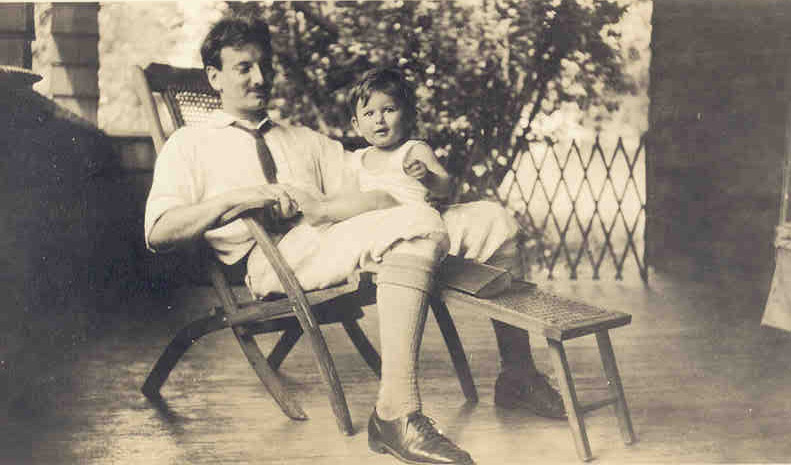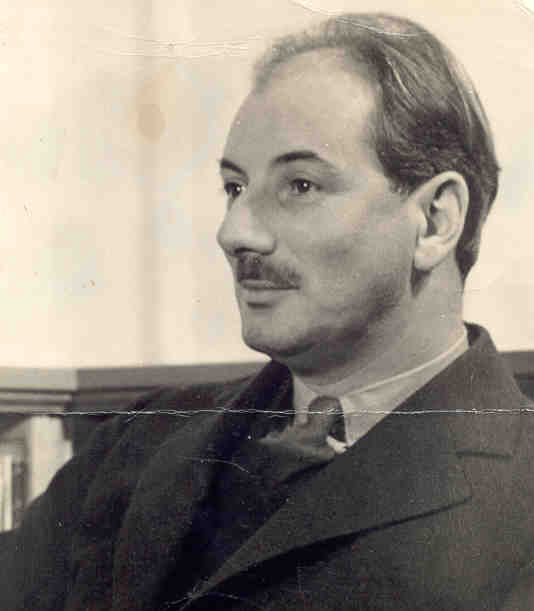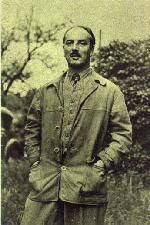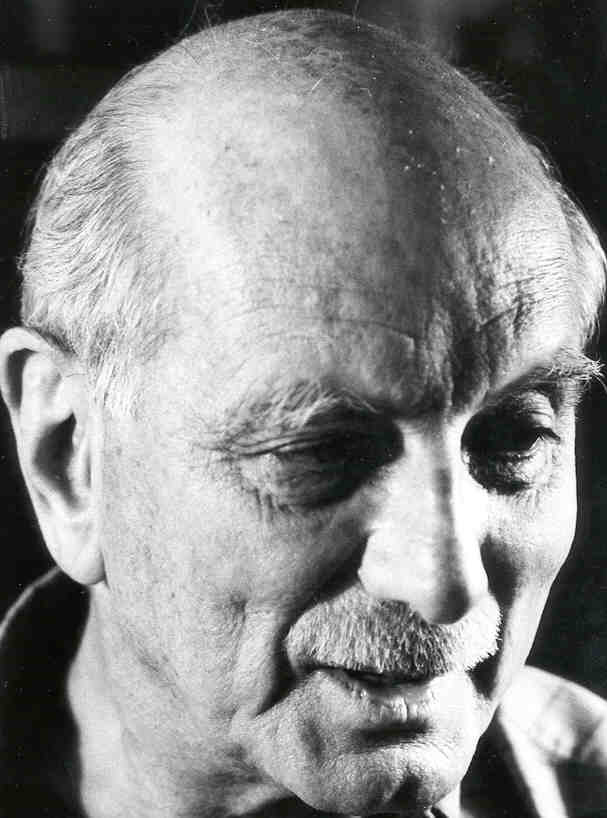A Brief Biography of
Lewis Mumford (1895-1990)
by Eugene Halton




"Certainly it is not in extensive cosmonautic explorations of
outer space, but by more intensive cultivation of the historic inner spaces of
the human mind, that we shall recover the human heritage. In a sense, all my
major books, starting with Technics and Civilization, the first volume
in The Renewal of Life series, have been attempts to understand the
repeated miscarriages of mind that have limited the highest achievements of
every historic civilization. My maturest interpretation
of the archaeological and historic evidence will be found in three successive
books: The City in History, 1960, Technics and Human Development,
1967, and The Pentagon of Power, 1970."
In
Mumford, Lewis. 1972. "Two Views of Technology and Man." Technology, Power, and Social Change, Charles Thrall and Jerold
Starr, eds. Carbondale: Southern Illinois University Press, pp. 1-16.
Internationally
renowned for his writings on cities, architecture, technology, literature, and
modern life, Lewis Mumford was called "the last of the great
humanists" by Malcolm Cowley. His contributions to literary criticism,
architectural criticism, American studies, the history
of cities, civilization, and technology, as well as to regional planning,
environmentalism, and public life in America, mark him as one of the most
original voices of the twentieth-century.
Born in Flushing on October 19, 1895, Mumford lived much of his life in New
York, settling in Dutchess County in 1936 with his
wife Sophia, in Amenia, where he died over a
half-century later, on January 26, 1990. His first book, The Story of
Utopias, was published in 1922, and his last book, his autobiography, Sketches from Life, was published sixty years
later in 1982.
Mumford preferred to call himself a writer, not a scholar, architectural
critic, historian or philosopher. His writing ranged freely and brought him
into contact with a wide variety of people, including writers, artists, city
planners, architects, philosophers, historians, and archaeologists. Throughout
his life, Mumford sketched and painted his surroundings, visualizing his
impressions of people and places in image, as his ever-present notepad
visualized them in words.
Given the range of Mumford's scholarly work, it is all the more interesting
that he did not have a college degree, having had to leave City College of New
York after a diagnosis of tuberculosis. But if whaling was Herman Melville's
Harvard and Yale, Mannahatta, as Mumford put it, was
my university, my true alma mater. From childhood on, Mumford walked, sketched,
and observed New York City, and its effects can be felt throughout his
writings.
He was architectural critic for The New Yorker magazine for over thirty years,
and his 1961 book, The City in History, received the National Book
Award. In 1923 Mumford was a cofounder with Clarence Stein, Benton MacKaye,
Henry Wright and others, of the Regional Planning Association of America, which
advocated limited-scale development and the region as significant for city planning.
By 1938 he was an ardent advocate for early American entry into what
was emerging as World War Two, a war which claimed the life of his son
Geddes in 1944, and was an early critic of nuclear weapons in 1946 and of U.S.
involvement in Vietnam in 1965. In 1964 he was awarded the Presidential Medal
of Freedom.
Lewis Mumford's work underwent a continuous series of transformations as he
broadened and deepened his scope. From his American studies books in the 1920s,
such as The Golden Day (1926) and Herman Melville (1929), which
contributed to the rediscovery of the literary transcendentalists of the 1850s
and The Brown Decades (1931) which placed the architectural achievements
of Henry Hobson Richardson, Louis Sullivan and Frank Lloyd Wright before the
public, through the four-volume "Renewal of Life" series published
between 1934 and 1951, which outlined the place of technics, cities, and
world-views in the development of Western Civilization, to his late studies of
the emergence of civilizations and the place of communication practices in
human development, he boldly denied the utilitarian view while evolving his own
vision of organic humanism.
Mumford's works share a common concern with the ways that modern life as a
whole, although providing possibilities for broader expression and development,
simultaneously subverts those possibilities and actually ends up tending toward
a diminution of purpose. He shows in lucid detail how the modern ethos released
a Pandora's box of mechanical marvels which eventually threatened to absorb all
human purposes into
The Myth of the Machine, the title he used for his
two-volume late work.
See, for example, Lewis
Mumford's critique of the World Trade Center from
1970, when it was just being built.
Despite what he saw as a likelihood of catastrophic dehumanization on the
horizon, he argued for the hope that the organic depths of human nature, of the
fibrous structure of history, might provide the basis for a transformation of
megatechnic civilization.
Mumford argued passionately for a restoration of organic human purpose in the
larger scheme of things, a task requiring a human personality capable of
"primacy over its biological needs and technological pressures, and able
to draw freely on the compost from many previous cultures."
As he
wrote in his 1946 book, Values for Survival:
"If we are to create balanced human beings, capable of entering into
world-wide co-operation with all other men of good will--and that is the
supreme task of our generation, and the foundation of all its other potential
achievements--we must give as much weight to the arousal of the emotions and to
the expression of moral and esthetic values as we now give to science, to
invention, to practical organization. One without the other is impotent. And
values do not come ready-made: they are achieved by a resolute attempt to
square the facts of one's own experience with the historic patterns formed in
the past by those who devoted their whole lives to achieving and expressing
values. If we are to express the love in our own hearts, we must also
understand what love meant to Socrates and Saint Francis, to Dante and
Shakespeare, to Emily Dickinson and Christina Rossetti, to the explorer
Shackleton and to the intrepid physicians who deliberately exposed themselves
to yellow fever. These historic manifestations of love are not recorded in the
day's newspaper or the current radio program: they are hidden to people who
possess only fashionable minds. Virtue is not a chemical product, as Taine once
described it: it is a historic product, like language and literature; and this
means that if we cease to care about it, cease to cultivate it, cease to
transmit its funded values, a large part of it will become meaningless, like a
dead language to which we have lost the key. That, I submit, is what has
happened in our own lifetime."
Mumford's 1982 autobiography was followed by a biography by Donald Miller in
1989, Lewis Mumford: A Life, New York: Weidenfeld
& Nicolson, 1989.
Mumford's
papers are stored in Philadelphia at the Van Pelt Library of The University of
Pennsylvania, and his library and watercolors and drawings are stored at the
library of Monmouth
University, West Long Branch, New Jersey.
************
Videos online:
"Lewis Mumford on the City." Entire series is available on National Filmboard of Canada website:
https://www.nfb.ca/search#?queryString=mumford&index=0&language=en
Lewis Mumford from BBC
documentary Towards Tomorrow: A Utopia. 1968 copy [2:21]
https://www.youtube.com/watch?v=gARS4F90wmw
The City (1939) w/ commentary
by Mumford. Music by Aaron Copeland
https://www.youtube.com/watch?v=7nuvcpnysjU
See also my discussions of Mumford:
Eugene
Halton, Chapter 12, The Last
Days of Lewis Mumford, from The
Great Brain Suck: And Other American Epiphanies, University of Chicago Press, 2008.
Eugene
Halton, From the Axial Age to the Moral Revolution, Palgrave Macmillan, 2014.
The
book contains numerous discussions of Mumford's writings related to Karl Jaspers' theory of
axial age, the period centered roughly around 500-600 BCE, and to John Stuart-Glennie's prior original idea that Stuart-Glennie
termed in 1873 "the
moral revolution," 75 years before Jaspers. Chapter 5 is titled "Jaspers
and Mumford."
Eugene
Halton, Chapter 4, Lewis Mumford's Organic Worldview,
from Bereft of Reason. Chicago: University of Chicago Press, 1995.
************
Books by Lewis
Mumford (Listed Chronologically)
The Story of Utopias. New York: Boni and Liveright, 1922.
Sticks and Stones: A Study of
American Architecture and Civilization. New York: Boni and Liveright,
1924.
The Golden Day: A Study in
American Experience and Culture. New York: Harcourt Brace
and Co., 1926.
Herman Melville. New York: The Literary
Guild of America, 1929.
The Brown Decades: A Study of
the Arts in America,1865-1895. New York: Harcourt Brace
and Co., 1931.
Technics and Civilization. New York: Harcourt Brace
and Co., 1934.
The Culture of Cities. New York: Harcourt Brace
and Co., 1938.
Men Must Act. New York: Harcourt Brace
and Co., 1939
Faith for Living. New York: Harcourt Brace
and Co., 1940.
The South in Architecture. New York: Harcourt Brace
and Co., 1941.
The Condition of Man. New York: Harcourt Brace
and Co., 1944.
City Development: Studies in
Disintegration and Renewal. New
York: Harcourt Brace and Co., 1945
Values for Survival: Essays,
Addresses, and Letters on Politics and Education. New York: Harcourt Brace
and Co., 1946.
Green Memories: The Story of
Geddes. New
York: Harcourt Brace and Co., 1947.
The Conduct of Life. New York: Harcourt Brace
and Co., 1951.
Art and Technics. New York: Columbia
University Press, 1952
In the Name of Sanity. New York: Harcourt Brace
and Co., 1954.
From the Ground Up. New York: Harcourt Brace
World, 1956.
The Transformations of Man. New York: Harper and Row,
1956.
The City in History: Its
Origins, Its Transformations, and Its Prospects. New York: Harcourt Brace and World, 1961.
The Highway and the City. New York: Harcourt Brace
and World, 1963.
The Urban Prospect. New York: Harcourt Brace
Jovanovich, 1968.
The Myth of the Machine:
Vol.
I, Technics and Human Development. New York: Harcourt Brace Jovanovich, 1967; Vol. II, The
Pentagon of Power. New York: Harcourt Brace Jovanovich,1970.
Interpretations and Forecasts
1922-1972.
New York: Harcourt Brace Jovanovich, 1972.
Findings and Keepings: Analects for an
Autobiography.
New York: Harcourt Brace Jovanovich, 1975.
My Works and Days: A Personal
Chronicle.
New York: Harcourt Brace Jovanovich, 1979.
Sketches from Life: The
Autobiography of Lewis Mumford. New York: Dial Press, 1982.
The Lewis Mumford Reader. Donald L. Miller, ed. New York: Pantheon Books, 1986.
************
Eugene Halton